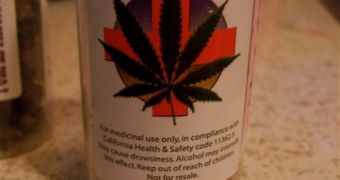America's teenagers consume a great variety of drugs, statistics show, among which the most important and dangerous are heroin, cocaine, crack cocaine, methamphetamine, LSD, ecstasy and marijuana. Over the last few years, since 2000-2002, a decreasing trend in drug use was registered in US secondary schools and high-schools, with children consuming less and less narcotics. However, numbers show that prescription pill abuse has increased substantially over the past 6 years.
Ecstasy, heroin and LSD kept a “steady” flow through US schools over the last half a decade, with respondents to a new nation-wide study reporting little variations in the amounts they consumed. More than 46,348 children in 386 schools answered the questionnaires that were given to them, which inquired about the drugs they had used the year before and about the frequency at which they took the substances.
A new trend among teenagers is to use prescription drugs such as Ritalin (used to treat attention deficit hyperactivity disorder – ADHD), and the painkillers Vicodin and Oxyconti, for non-medical use, in that they far exceed the recommended quantities, in order to get a “high.” Overall, Ritalin use has declined significantly, as respondents indicated that only 3.4 percent of 12th graders used it the previous year.
Marijuana consumption nation-wide has started increasing again, after the last 10 years saw a steady decline in its influence on American teenagers. Statistics show that 20 percent of all 8th graders tried the illicit substance at least once, and that 14 percent of them said that they had tried the drug the previous year. In 12th graders, 47 percent of them admitted to having smoked pot at least once in their lifetime, with 37 admitting to having smoked it the year before.
The reports conclude that more federal efforts need to be focused on curbing the abuse of prescription medicine among the nation's youth, as well as heavy drug use. This will not be easy to accomplish, as previous campaigns aimed at reducing the influence of the substances had little effect on prescription meds, and on acid, ecstasy and heroin, which are even now used as recreational substances at parties and raves.

 14 DAY TRIAL //
14 DAY TRIAL //